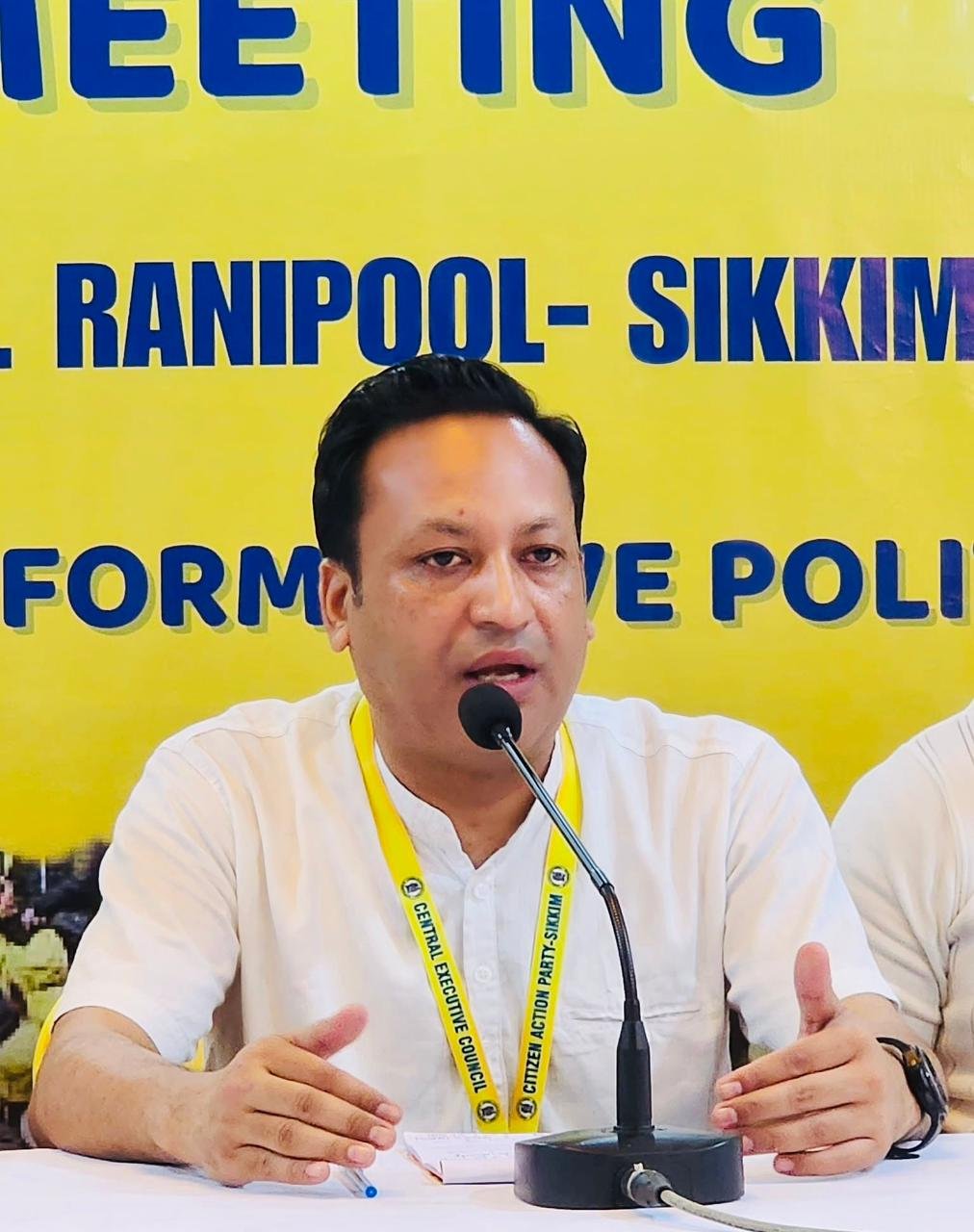Gangtok, 4th September: Sikkim is among six Indian states where glacial lakes are rapidly expanding, raising concerns about potential floods and disasters, according to the latest report by the Central Water Commission (CWC).
“432 Glacial Lakes (out of 681) located within India as per Glacial Lake Atlas 2023 display increase in water spread area during the month of June 2025, and hence demand vigorous monitoring for disaster purpose,” the CWC report said.
The report, part of the monthly monitoring of Glacial Lakes and Water Bodies for June 2025, flagged 432 lakes across Ladakh, Jammu and Kashmir, Himachal Pradesh, Uttarakhand, Sikkim, and Arunachal Pradesh for urgent monitoring. Arunachal Pradesh has the highest number of expanding lakes (197), followed by Ladakh (120), Jammu and Kashmir (57), Sikkim (47), Himachal Pradesh (6), and Uttarakhand (5).
Sikkim faces a particularly serious threat, with experts warning that at least 16 of its glacial lakes are classified as “high risk.” Among these, South Lhonak Lake’s water level has already risen to the same level as it was before the devastating Glacial Lake Outburst Flood (GLOF) of October 2023, while Shako Chho Lake also poses a significant threat.
Since 2011, the total glacial lake area in India has increased by over 30 per cent, rising from 1,917 hectares to 2,508 hectares. “The total Inventory area of Glacial Lakes within India was 1,917 Ha during the year 2011 which has increased to 2,508 Ha during the year 2025 (June). There is a 30.83% increase in area. (Out of 100GLs, only 55 GLs were considered for this interpretation. The remaining lakes include 40 SDC lakes which have no inventory details as well as lakes which were not analysed/have been merged during the month of June, 2025.),” the report added.
To assess the risks, the Science and Technology Department, Government of Sikkim, conducted a detailed scientific expedition from August 20 to September 1, 2025. The study was carried out in collaboration with central agencies including the Central Water Commission, Geological Survey of India, National Institute of Hydrology, Defence Geoinformatics Research Establishment, and state departments, along with Sikkim University. The Indian Army and ITBP provided crucial support, including transport, medical aid, and satellite communication in high mountains.
Also Read: South Lhonak and Changsang lakes studied in latest glacial expedition in Sikkim Himalayas
The expedition had two teams. One completed surveys around Lhonak Lake, the site of the 2023 disaster, while the other covered the higher reaches of the Lhonak Valley and other identified lakes. According to Science and Technology Department Secretary Dr. Sandeep Tambe, Sikkim has 40 glacial lakes, with 13 high-risk lakes in Mangan district and 3 in Gyalshing district. The Mangan lakes feed the Teesta River, while the Gyalshing lakes feed the Rangit River. Dr. Tambe added that modern technology such as drone mapping, LIDAR, and bathymetric surveys were used to study water levels, geological stability, and flood risks, with discussions underway on protective measures like early warning systems and safety structures.
The findings come amid widespread flooding in northern India. Recent landslides and heavy rains have caused fatalities in Himachal Pradesh, Uttarakhand, and Jammu and Kashmir, including 34 deaths on the Mata Vaishno Devi pilgrimage route.
The CWC emphasized the need for real-time monitoring, satellite-based alerts, and early-warning systems for downstream communities. It also recommended closer coordination between the Ministry of Jal Shakti, National Disaster Management Authority (NDMA), state disaster management authorities, and transboundary cooperation with Nepal, Bhutan, and China.
“The Himalayan Region (HR) is facing important challenges in coping with the adverse effects of climate change. Physically, the shrinking of mountain glaciers and expansion of Glacial Lakes are amongst the most recognizable and dynamic impacts of climate warming in this environment,” the report said.



In Lachung also have three denger glacial lakes khangkyong and khora glaciers.